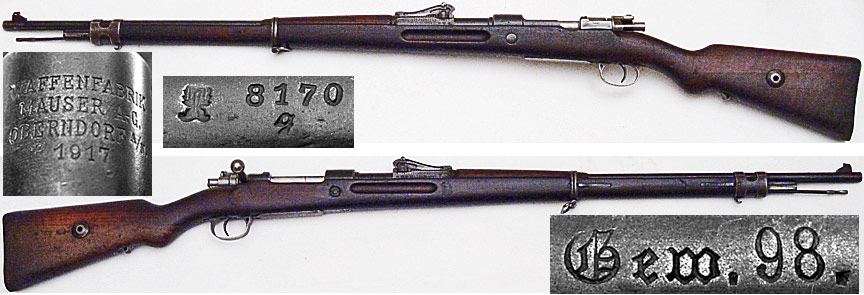Mauser Kar 98 Serial Numbers

Receiver with byf 1943 code - Mauser-Werke KG, Oberndorf on the Neckar. Receiver wihth propably CE code from 1942 year - J.P. Sohn, Waffenfabrik, Suhl, Thuringia. Here you can see serial number and Kar 98. Some code on german Mauser 98k receiver. Code on long Mauser Gew. Jun 29, 2006. You have a pre-war Banner Mauser made in Oberndorf. The 'c' in front of the serial number denotes the production run which makes it an early rifle along with the 1934 date. Your rifle is properly marked. My only recommendation would be to clean it, apply a thin film of gun grease in the bore and on all. According to John Walter's, The German Rifle, and the total estimated production figure for the Kar98a from all German government arsenals was over 1.5 million Carbines. According to known serial numbers Amberg produced an estimated total of. Olson, Ludwig, Mauser Bolt Rifles 3rd edition, 1988. Their designs were widely popular and have been exported to a number of countries, and their design remains the model on which almost every successful bolt action. A slightly shorter carbine version known as the 'Kar 98' was introduced in World War I but appears to have seen very little production and remains rare.
Karabiner 98k in mint condition, made in 1940. From the collections of the Type Place of origin Service history In service 1935–present Used by See Wars See Production history Designed 1935 Manufacturer (augmented by several other makers) Produced 1935–45 No. built 14,600,000 + Variants Kriegsmodell, scoped Specifications Weight 3.7–4.1 (8.2–9.0 ) Length 1,110 mm (43.70 in) length 600 mm (23.62 in) 760 m/s (2,493 ft/s) Effective firing range 500 m (550 yd) with iron sights 1,000 m (1,090 yd) with telescopic sight Maximum firing range 4,700 m (5,140 yd) with s.S.
Patrone Feed system 5-round, internal Sights. Design Biogas Plant Pdf Creator on this page. The Karabiner 98 kurz (; ' 98 short', often abbreviated Kar98k or K98k) is a chambered for the cartridge that was adopted on 21 June 1935 as the standard by the German. It was one of the final developments in the long line of military rifles.
Although supplemented by semi- and fully automatic rifles during World War II, it remained the primary German service rifle until the end of the war in 1945. Millions were captured by the Soviets at the conclusion of World War II and were widely distributed as military aid. The Karabiner 98k therefore continues to appear in conflicts across the world as they are taken out of storage during times of strife.
Contents • • • • • • • • • • • • • • • • • • • • • • • • • • • • • • • • • • History [ ] In February 1934 the (Army Weapons Agency) ordered the adoption of a new military rifle. The Karabiner 98k was derived from earlier rifles, namely the Mauser Standardmodell of 1924 and the Karabiner 98b, which in turn had both been developed from the. Since the Karabiner 98k rifle was shorter than the earlier Karabiner 98b (the 98b was a in name only, a version of Gewehr 98 long rifle with upgraded sights), it was given the designation Karabiner 98 kurz, meaning 'Carbine 98 Short'.
Just like its predecessor, the rifle was noted for its reliability, great accuracy and an effective range of up to 500 metres (550 yd) with iron sights and 1,000 metres (1,090 yd) with an 8×. The desire for adopting new shorter barreled rifles and the introduction of the Karabiner 98k, featuring a 600 mm (23.62 in) long barrel, were reasons for changing the standard German service ball rifle cartridge. The 1903 pattern 7.92×57mm Mauser S Patrone produced excessive muzzle flash when fired from arms that did not have a long barrel like the Gewehr 98. It was found that the s. Download Ebook Harry Potter Bahasa Indonesia Lengkap Sdn. S. Patrone, originally designed for long range machine gun use, produced less muzzle flash out of rifles that had a shorter barrel and also provided better accuracy. Because of this the S Patrone was phased out in 1933 and the s.S. Patrone became the standard German service ball cartridge in the 1930s.



